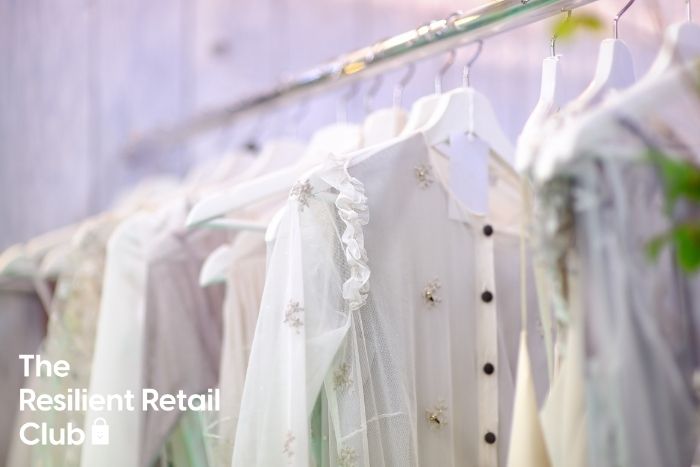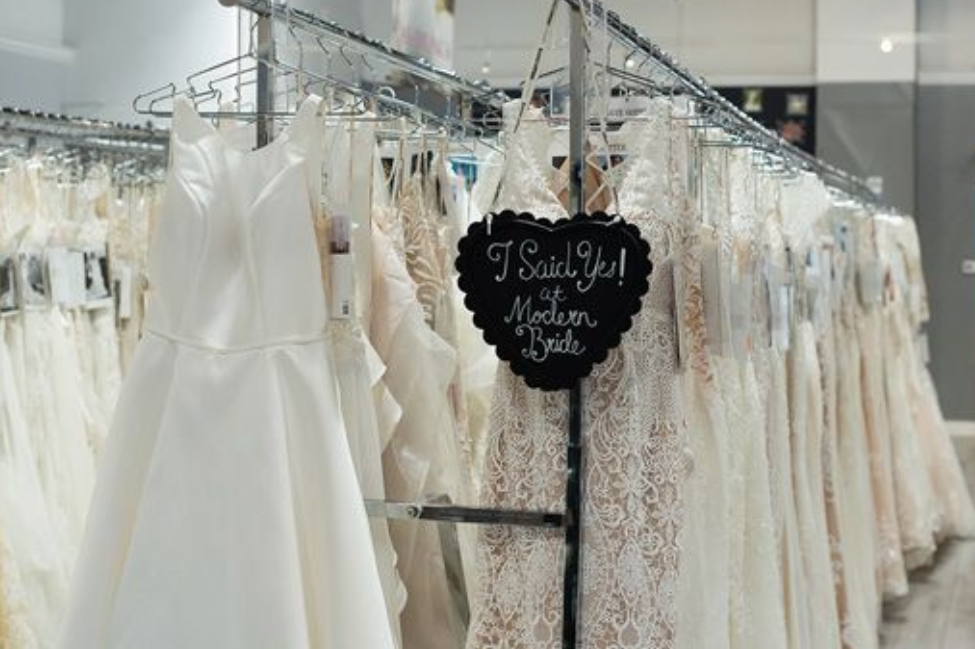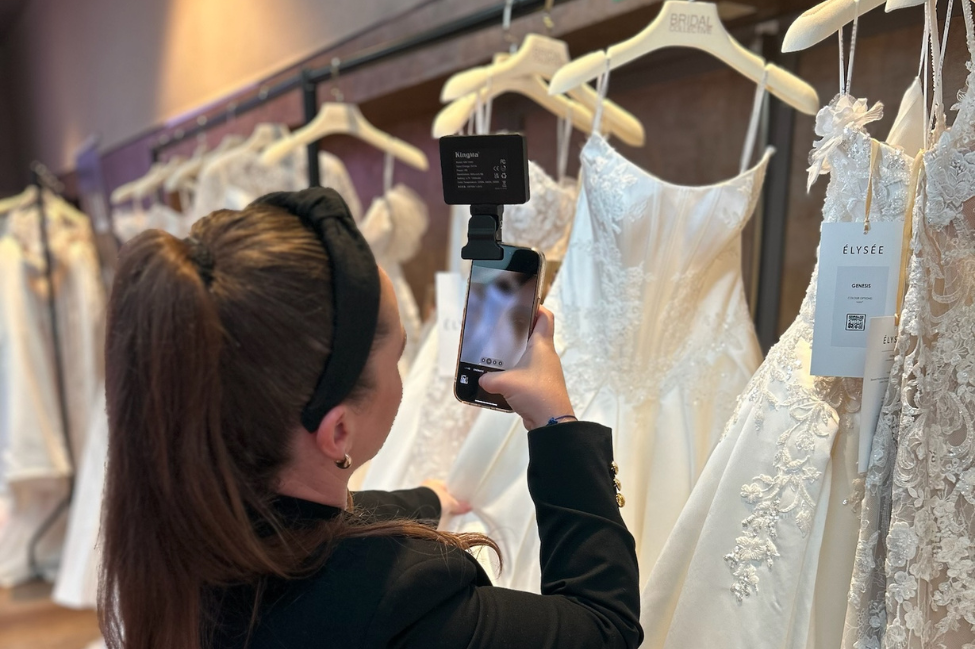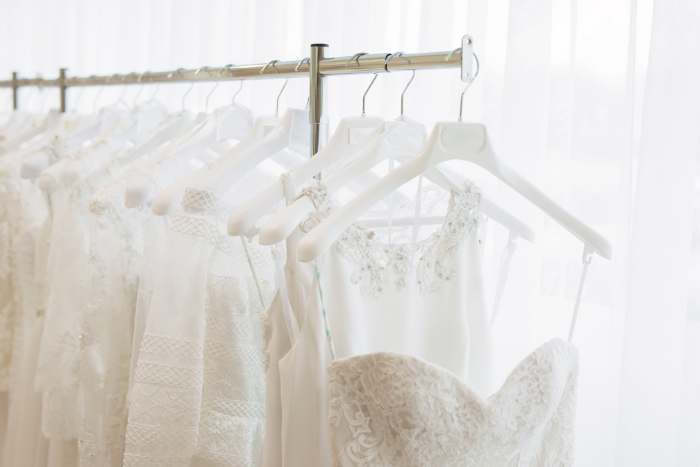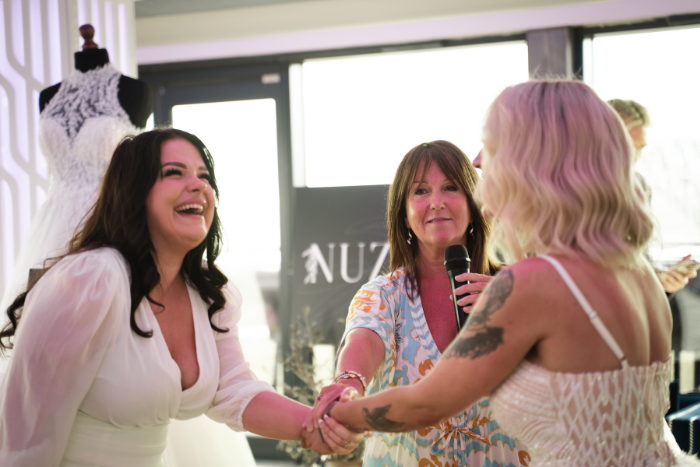Cashflow: The Secret to Business Success
Emma Swain, founder and owner of Nora Eve Bridal, discusses the biggest secret to business success and five top tips on how bridal boutiques can effectively manage their finances.
If I think back to the early days, my business finances were causing so much stress. I didn’t have a clue how much money was coming in or going out: when there was money in the bank account I would spend, spend, spend, and when it wasn’t, I would panic about how to pay next week’s wages and bills.
I was constantly worried out about money and not even paying myself enough to make the long working hours away from my daughter worthwhile. I knew something had to change but didn’t know what, until I attended a training session on money mindset and realised where I had been going wrong. I discovered that the real secret to business success is cashflow.
Let’s get back to basics: what is cashflow, and why is it important?
Cashflow is the flow of money in and out of your business. Money flows into your business from customers buying your dresses, accessories, etc. and flows out as you pay wages, rent and other business costs. Cashflow can be positive or negative, but when you’re spending more than you earn, it’s not sustainable for long and your business won’t be able to survive. In fact, as many as 82% of small businesses fail because of poor cashflow: don’t be one of them!
Having a good understanding of cashflow helps you to:
1. Make better decisions. I used to attend bridal shows and buy the collections I loved the most. Now I go armed with a budget based on the cash available in my business at the time. I even wait until after the show before submitting my orders to give myself time to crunch the numbers. Knowing what you can afford helps you to make better decisions and reduce risk.
2. Increase profits. A good cashflow will show you where you’re spending money and make it clear what areas you can cut back on. Reducing overheads directly impacts the bottom line, so managing your cashflow well means more profits.
3. Maintain good relationships with suppliers. When you have an overview of what is coming in and out you are better equipped to budget for supplier invoices and be able pay them on time. Some suppliers may even offer small discounts for prompt payments so this doesn’t just keep supplier relationships friendly, it can also help your bottom line.
4. Invest in growth. Growing your business is exciting! Whether it’s taking on more staff, moving to a bigger premises or investing in a new designer, growth requires a lot of resource to fund. Knowing your cashflow forecast will help you to grow at the right time.
What is the best way to monitor cashflow?
There are lots of tools and software available to help you manage your cashflow, but for day-to-day use I prefer a trusted spreadsheet. It’s easy to update and play around with numbers so you can see at a glance the financial impact of your decisions. Used in conjunction with your sales package you’ll quickly be able to identify any gaps that need filling, or where you might have a little extra to play with.
What issues prevent effective cashflow, and how can you overcome them?
I realised there were a few fundamental mistakes I was making when it came to managing my business cashflow, and once they were pointed out it actually became easy to resolve them.
1. As well as being seasonal, bridal sales are often split into deposit and balance payments months apart. It’s so tempting to spend the deposits as soon as they come in, without properly budgeting for wages, overheads and supplier costs first. Setting yourself a minimum balance goal, or putting a sum of money aside to pay suppliers as soon as that first payment is made, can go a long way to maintaining a positive cash balance.
2. Ever the optimist, my first attempt at a cashflow forecast was more dream than reality. There’s no point creating a spreadsheet of what you would like to spend, underestimating costs will just get you into a bigger pickle. Make sure every cost you can think of is included and any estimates are realistic.
3. Do you really need a bigger shop, more staff, a new collection? Growing too quickly, when you don’t yet have the cash or profits to sustain growth, can quickly cause your business problems. As a business owner I’m still learning to control this one, shiny object syndrome is definitely a thing!
4. When I sat down with my business coach and looked at my cashflow properly for the first time it was obvious the business was spending more than it could afford. High overheads (things you have to spend on for your business to survive – rent, wages, insurance for examples) are one of the most common reasons for poor cash flow, and one of the easiest to reduce quickly.
5. Being able to instantly compare income with outgoings I was quickly able to recognise that my pricing was too low. By stocking dresses at a lower price point with a smaller profit margin, I needed to sell more – meaning a bigger shop, more stock, more staff & more appointments (all of which cost money). Understanding my cashflow gave me the confidence to review my designers, invest in new collections and increase the price point and profitability of my stock.
By recognising these challenges and finding ways to overcome them I was able to take my business from cashflow negative to positive in under a year. I now feel in control of our finances, and better informed when making decisions about the future – so much so I’ve been able to take on new staff, invested in launching my own bridal brand, Ella Kate, and will be relocating to bespoke designed boutique later this Autumn.
Five top tips to help bridal boutiques manage their cashflow better
1. Make cashflow a part of your daily routine. My spreadsheet is always open and regularly updated, so I have all the information I need ready when decisions need making.
2. Be honest with your numbers. Don’t be tempted to leave costs out because they’re scary or don’t look pretty. Include everything to get a realistic view of your finances.
3. Cut your overheads. This will have the biggest impact on your business, profit and reduce your personal stress levels.
4. Be confident about price increases, it will directly improve your bottom line.
5. Don’t spend more than you have!

